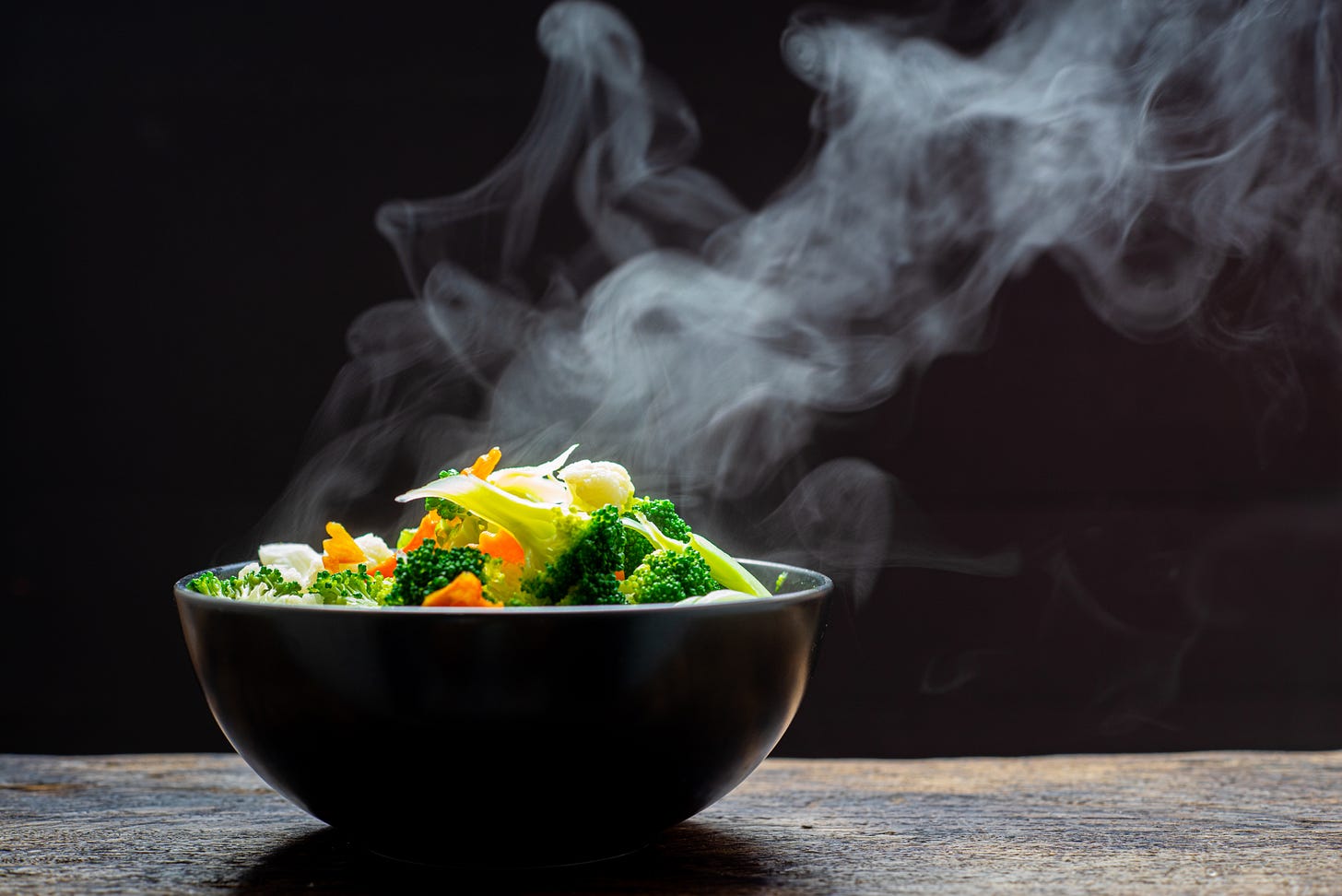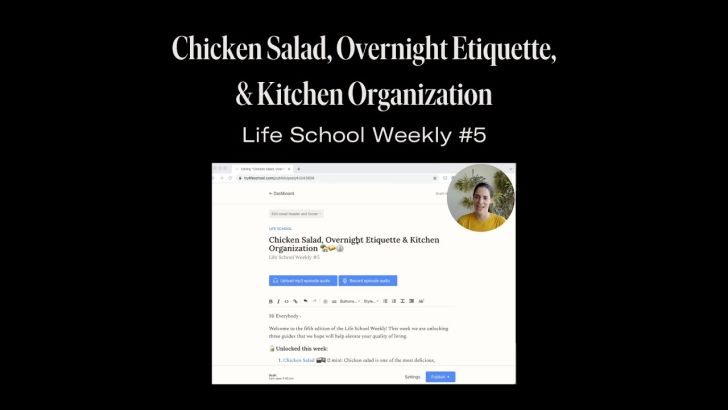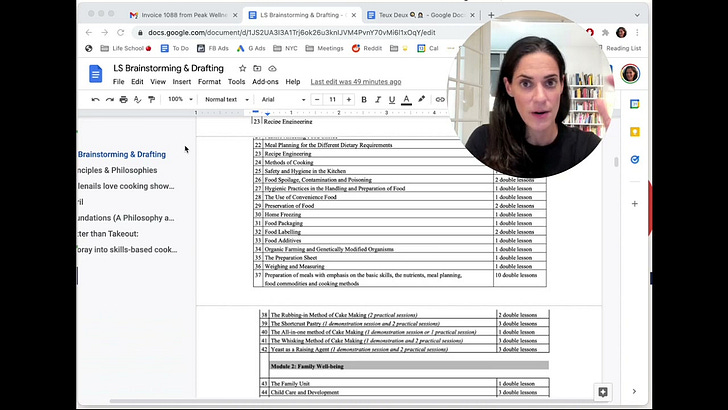This lesson is 766 words, a 3 min and 3 sec reading time. It is part of How to Boil Water, as well as the MaxF Meal Prep Collection.
💡 Introduction:
Steaming is a skillset worth mastering because it is one of the easiest, healthiest, and fastest ways to cook vegetables. All you need is a pot, a steamer, and some vegetables to put in it. Within minutes you’ll have lightly cooked veggies - easy to whip up into a side dish or save for later use. Steamed vegetables are extremely dietetic because they require no fat or oil to cook. Better still, they provide a perfect blank canvas for dressings & toppings.
🧂 Ingredients
Vegetable(s)
Toppings (optional)
⚙️ Gear
Pot (with lid)
Steamer
✅ Instructions
Place steamer basket in the pot & bring one inch of water to boil
While heating, chop vegetables
Add vegetables, place lid & set a timer (see timing reference guide)
Check vegetables for doneness (see notes for more detail)
Carefully remove the steamer basket or use tongs to transfer vegetables to another dish
Dress & serve, or store.
📝 Notes, Tips & Tricks
Steaming is a moist heat cooking method that surrounds food from above and below with steam, which helps keep veggies moist and intact. It also helps preserve a vegetable’s color, flavor, texture, & nutritional value (e.g., vitamin B & C) due to the gentle nature of the steaming process.
Steamed vegetables are more nutritional than raw. The steaming process breaks down tough outer layers and cellular structures, making it easier for the body to absorb nutrients. Boiling, on the other hand, causes many nutrients to leach into the water.
There are many types of steamers - bamboo, metal, silicone, even using a plate or small metal colander/sieve. Steel folding baskets are ideal as they expand to fit any pot and are easy to procure (e.g., local hardware or grocery store).
To steam using a plate, make three balls of aluminum foil & place them under an inverted plate inside the pot.
In general, try to keep the vegetables from touching the water as they can get soggy. However, if you’re in a big rush, you can put some water in a pot and steam the veggies on top. Less porous veggies will do fine (e.g., broccoli, greens).
Keep vegetable size & shape uniform. This ensures they cook evenly (e.g., no mushy/crunchy pieces). Smaller pieces will cook more quickly, so cut oversized or dense items like winter squash into manageable chunks.
Frequent checking slows down cook time as the steam evaporates and must build up again. Use a timer to avoid this problem. For the most exact timing, set the timer a bit early (~2-5 min, depending on suggested length) to ensure you don’t overcook.
To check for doneness, poke with a sharp knife. Alternatively, remove a piece, let it cool, and taste. Vegetables should be bright and firm. If the vegetable is “squeaky,” it’s undercooked. Mushy is overcooked. Aim for a slightly al denté (firm) texture, as the vegetable will continue cooking after removed from the steam.
If you’re cooking two or more vegetables simultaneously, cut the longer-cooking vegetables into smaller pieces than the quick-cooking ones.
Safety: Steam burns can be severe. To avoid, wear protective mitts and never lean over a pot as you remove the lid.
To avoid soggy, water-logged vegetables, remove the lid and transfer vegetables to a plate or sheet tray to evaporate for a couple of moments before the next step in your recipe.
A quick trick for adding melted butter: remove the vegetables from the pot while still hot & pour out the water. Add the butter to the still-warm pot, let it melt, swirl it around, and add back the veggies. Then top with cheese, breadcrumbs, lemon juice, etc.
You can steam other foods too (e.g., delicate ones like dumplings & fish)
📓 Steam Time Reference Guide
Time in minutes; the goal is al denté (enjoyably firm, not mushy)
3-5: spinach, bok choy, cut asparagus, sliced summer squash, fresh shelled peas
5-7: kale, chard, green beans, sugar snap peas
7-10: cauliflower, broccoli, whole asparagus spears, corn on the cob, leeks,
10-15: cut potatoes, cut or baby carrots, small turnips, winter squash, brussel sprouts, cut sweet potatoes
25+ min: artichokes, small potatoes, beets
🗂 April & Michelle’s Favorite Recipes
Classic: melted butter, grated parmesan, lemon
Californian: olive oil, salt flakes & lemon
Asian-inspired: soy sauce, chili-garlic paste, sesame oil, and rice vinegar
Mediterranean-inspired: tahini, garlic, lemon, yogurt
Spicy: hot sauce, butter, and lime
Other toppings & flavors: breadcrumbs, maldon flakes, toasted nuts, salad dressing, pesto, harissa, tapenade, fresh herbs - get creative!
🎓 Further Study
Seasonal Vegetables to Boil [Life School]
How to Steam Without a Steaming Basket [Epicurious]
The healthiest ways to cook veggies and boost nutrition [CNN]
—
🙋♂️ Have an idea for a lesson? Request one here.
🤓 Know anybody who would make a great Head of Research? We’re hiring!
📚 Want to learn more? Check out the Bulletin Board.
🎳 Lesson Team: Michelle Tandler (Research) & April Word (Expert Chef)










